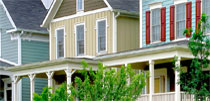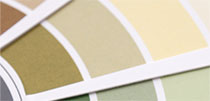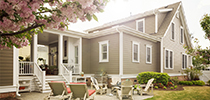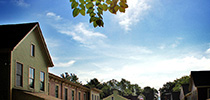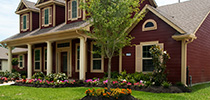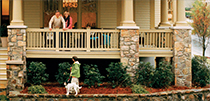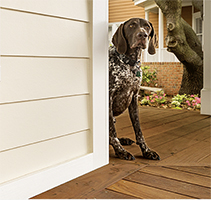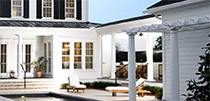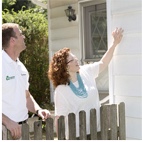by Bridget Kulla
2017-04-11

There’s something healing about decorating your home with plants. In an instant, these living things bring color, texture and fresh filtered air to a space. And as they grow in their pots or thrive on a wall, they’re ever changing. Whether it’s a blooming succulent, a healthy fern, fresh basil, or a wild-armed air plant—plants make a space feel alive.
If you find yourself craving more than the sprinkling of potted plants in your home, create your own wall of plants that live vertically. Your indoor or outdoor wall can be the new home to a garden of lush tropicals, a variety of succulents, or the freshest herbs.

To keep your walls dry and your plants vertical and vivacious, we spoke to Karen Emmett, junior designer at Chicago’s Sprout Home. She clued us in on the tips you need to create a living wall that will flourish in its new space.
Location scouting.
Explore your home—inside and out—to find the perfect spot for your living wall. You’ll want to be sure there’s enough room on the wall for the dimensions you’ve envisioned. Your vertical greenery can hang in your foyer, above a fireplace, on a vacant wall in the kitchen, on your deck, or anywhere with enough space. Once you’ve found the location, assess the amount of sunlight that hits it and the direction it is coming from, Emmett says.

Follow the sun.
The light in the space you’ve selected will help you choose the plants that will thrive there. After all, a succulent and sage have very different sun needs. “If you have direct south or west facing sunlight during the afternoon to sunset hours, succulents are the way to go,” Emmett says. Like succulents, herbs like a good amount of direct sun. If you’re hoping to create a vertical herb garden, it may thrive most if it is located outdoors, Emmett says. “If you have lower light in a north or east window, stick to forest type plants such as ferns, and foliage (think Pothos or spider plants),” she says, “and if you have less sunlight than that, or no window at all, consider creating a preserved moss wall.”
Peep pre-made wall planters.
There are well-designed wall planters that make creating a living wall a simple weekend project. We like the look and the military grade, built-in moisture barrier of Woolly Pocket, along with Grovert’s stylish, simple planting cells that can flaunt a wood frame surround. Both options protect from moisture, so plants get the water they need, but your wall stays dry as a bone.

Use a recycled palette.
Make your own urban-meets-rustic living wall with a shipping pallet. To do so, you remove the wood slats on the back of the palette and replace with a thin piece of plywood. Then use a staple gun to cover back of the plywood with plastic sheeting. Cover the sheeting with landscape fabric, and then use the same fabric to create pockets on the underside of each slat; these will house your plants. Once your chosen plants nestled in the pocket covered in soil, you can hang the pallet on the wall or let it lean vertically.
Learn the dirt on dirt.
If you are planting edibles, such as herbs and lettuce, you may want to use an organic soil, Emmett says, but for decorative plants, you would just use a potting soil. “For foliage plants use an all-purpose potting soil, and for succulents use a succulent or cactus specific soil, as it allows for better drainage,” Emmett says. When it comes time to transfer your plant from a pot to the wall, gently massage the root ball to loosen it up a bit before setting in the soil, Emmett says. Then just make sure all of the roots are covered with soil and pat the soil down lightly around it.

Water right.
Once the planting is complete, it’s time to water. Plants needs vary based on the species, the location, and amount of light and time of year. Know your plant type and find out its watering needs when you purchase it. Generally, Emmett advises to water succulents rarely, they prefer dry soil, keep herbs evenly moist, and foliage should be watered when the soil surface dries.
Gone are the days of dead wall space, instead, let your wall live. Between the fresh filtered air, the earthy smell and the organic look, living walls are a soothing and stylish addition to your space. Sit back and breathe in the fresh air and the new life you just added to your home.


